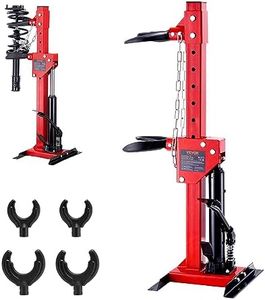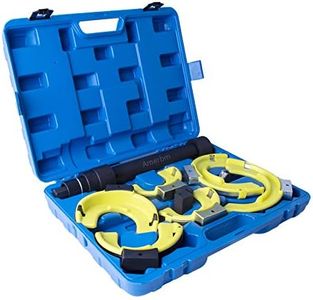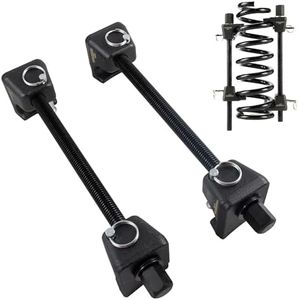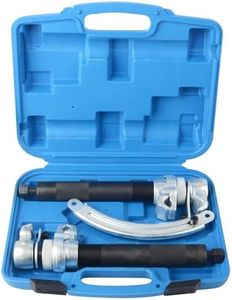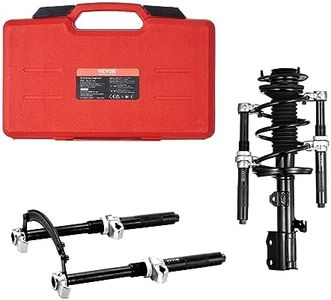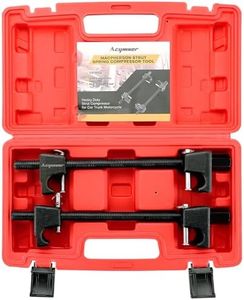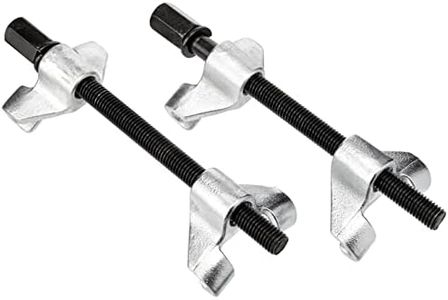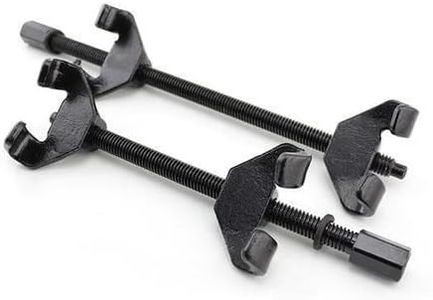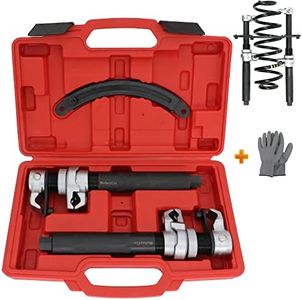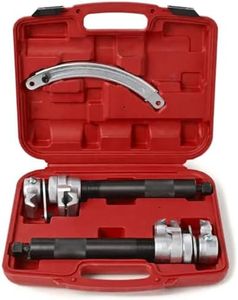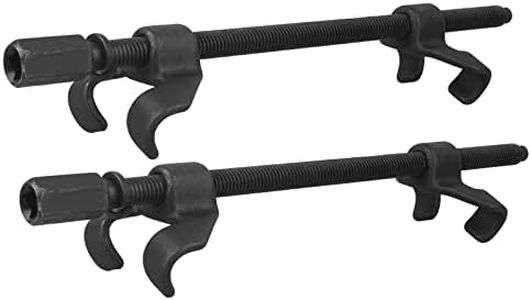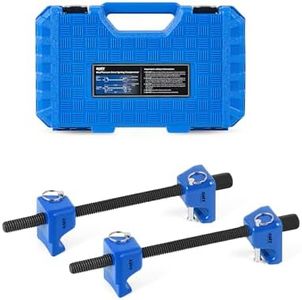We Use CookiesWe use cookies to enhance the security, performance,
functionality and for analytical and promotional activities. By continuing to browse this site you
are agreeing to our privacy policy
10 Best Coil Spring Compressors
From leading brands and best sellers available on the web.Buying Guide for the Best Coil Spring Compressors
Choosing the right coil spring compressor is crucial for anyone working on vehicle suspension systems. This tool allows you to safely compress and remove or install coil springs, which can be under a lot of tension and dangerous without the proper equipment. The perfect fit depends on your vehicle type and how you plan to use the tool. Understanding the main specifications ensures you select a safe, compatible, and easy-to-use compressor.Compression TypeCoil spring compressors typically come in two types: internal and external. Internal compressors are inserted inside the spring, while external ones grip the coils from the outside. Internal compressors are often used for tighter, narrower springs, while external compressors work well with more accessible and broader coils. When choosing, consider the kind of car you have and the design of your suspension. If you work on a variety of vehicles or have limited space around the spring, internal compressors offer more flexibility, but beginners often find external types easier to use in open spaces.
Maximum Compression CapacityThis spec refers to how much force the tool can safely apply and the maximum size of the spring it can handle. Generally, capacities are listed as the maximum length or diameter of a spring and the maximum load (often in pounds or kilograms). Light-duty compressors are suitable for most passenger cars, while SUVs, trucks, or heavy-duty applications require a tool with a higher compression capacity. Consider the types of vehicles you'll be servicing—pick a higher capacity if you expect to work on larger or heavier springs, but don't overbuy for small cars.
Build Quality and MaterialThe material and construction quality determine both the safety and durability of a spring compressor. Steel is the most common material, but thicker, heat-treated, or forged steel compressors resist bending and breaking under high stress. Poor-quality tools can slip or break, which can be extremely dangerous. If you plan to use the compressor often or for heavy-duty vehicles, look for robust construction and manufacturer safety certifications. For occasional or DIY use, standard steel is often sufficient, but always check for solid welds and secure attachment points.
Safety FeaturesSafety is vital when working with compressed springs. Features like locking pins, safety hooks, anti-slip jaws, and well-designed threads reduce the risk of slippage or accidental release. More advanced compressors may have double-clamp designs or extra guards. Prioritize safety features if you are new to this kind of work or if your spring access is awkward—some vehicles make this job trickier. Even for experienced users, more safety features can provide extra peace of mind and prevent accidents.
Ease of Use and CompatibilityHow easy the tool is to set up and operate—such as clear instructions, wide adjustability, and simple mechanisms—makes a big difference, especially for at-home mechanics. Some compressors include adapters or are designed to fit a broad range of vehicle models, while others may be more specialized. Think about whether you'll reuse the tool on different vehicles or need it for one specific purpose. If you have limited experience or anticipate using it only occasionally, choose a model designed for user-friendliness and versatility to avoid frustration.

